Intro to the Project:
This project explores the often-overlooked but materially significant object: the clothing hanger. As a daily-use item central to garment storage, hangers influence how we care for clothes and contribute to the environmental footprint of the fashion industry.
Through two complementary research approaches—a literature and data-driven study and a participatory research prototype—this project examines how hanger materiality intersects with consumer behavior, sustainability, and design. It questions not only how we choose hangers, but also how design might evolve beyond the assumption that longevity is the ultimate sustainability goal. Inspired by object-centered, animist, and nature-centered design methodologies, this work invites reflection on whether everyday objects, like hangers, should be built to last—or to gently return to the earth.
Research Prototype:
Animism, Materiality, and the Relationship Between Objects and the Planet
Why This Research Matters:
We rarely think about clothing hangers, yet they play a signi cant role in garment care and sustainability. Through participatory research, I explored how people make choices about hangers, what in uences their decisions, and how those choices align (or don’t) with sustainability values.
Design Question: How does the materiality of clothing hangers in uence our relationship with garments and the planet?
This study asks:
o How do consumers make decisions about hanger materiality
o Do they prioritize sustainability in these choices?
o What can we learn from real-world behaviours vs. stated values?
Possibility Area:
Clothing hangers, often considered insignificant, represent a larger issue of material waste and detachment from objects. Many are mass-produced from non-biodegradable plastics, contributing to land ll waste. By exploring animism in design, this research investigates how material choice fosters a deeper relationship with objects and encourages sustainable care practices.
Research Design & Approach:
I designed a structured participatory study where participants engaged in hanger selection activities, sustainability discussions, and behavioural analysis. The goal was to see how they make choices and whether those choices match their sustainability awareness.
Methods & Methodologies Used:
This study primarily employs qualitative research methodologies, integrating historical analysis, sustainability assessment, and object-centered design approaches. The following methods were used:
1/ Structured Decision-Making Activity – Participants matched clothing tags to hanger types based on material, brand, and care needs.
2/ Sustainability & Hanger Waste Discussion – Participants reflected on discarded hangers in landfills and proposed sustainable alternatives.
3/ Behavioural & Habitual Analysis – Observed whether their hanger choices aligned with their sustainability values.
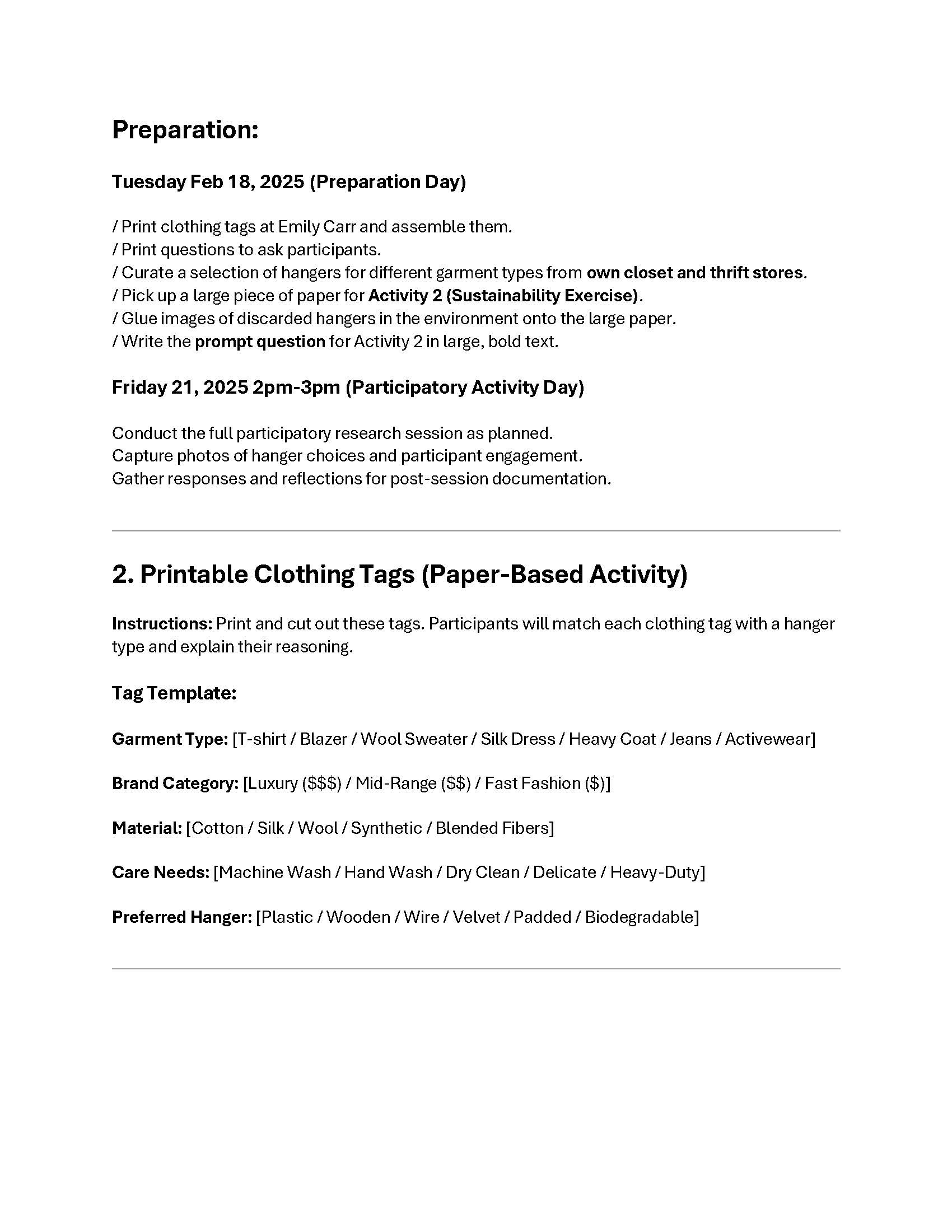
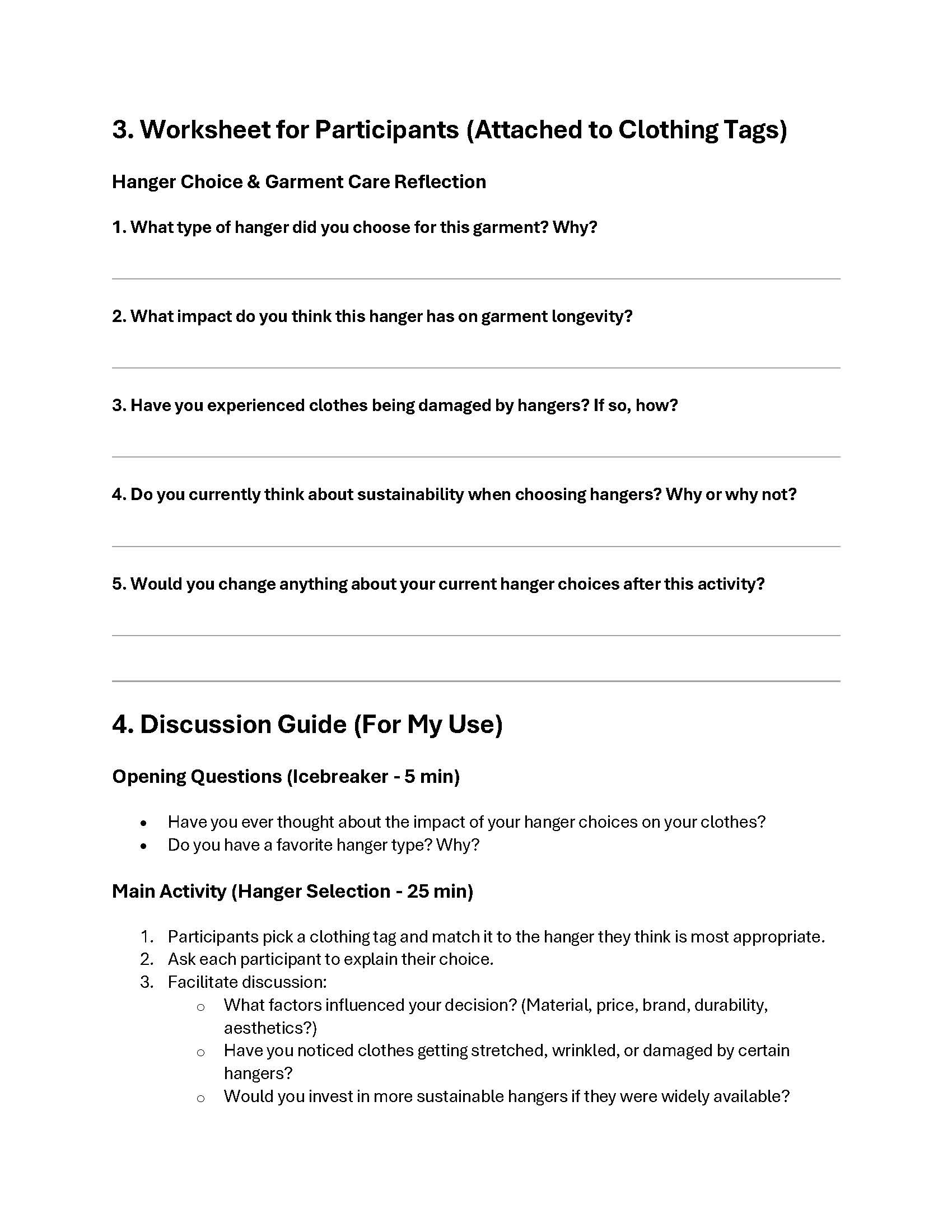

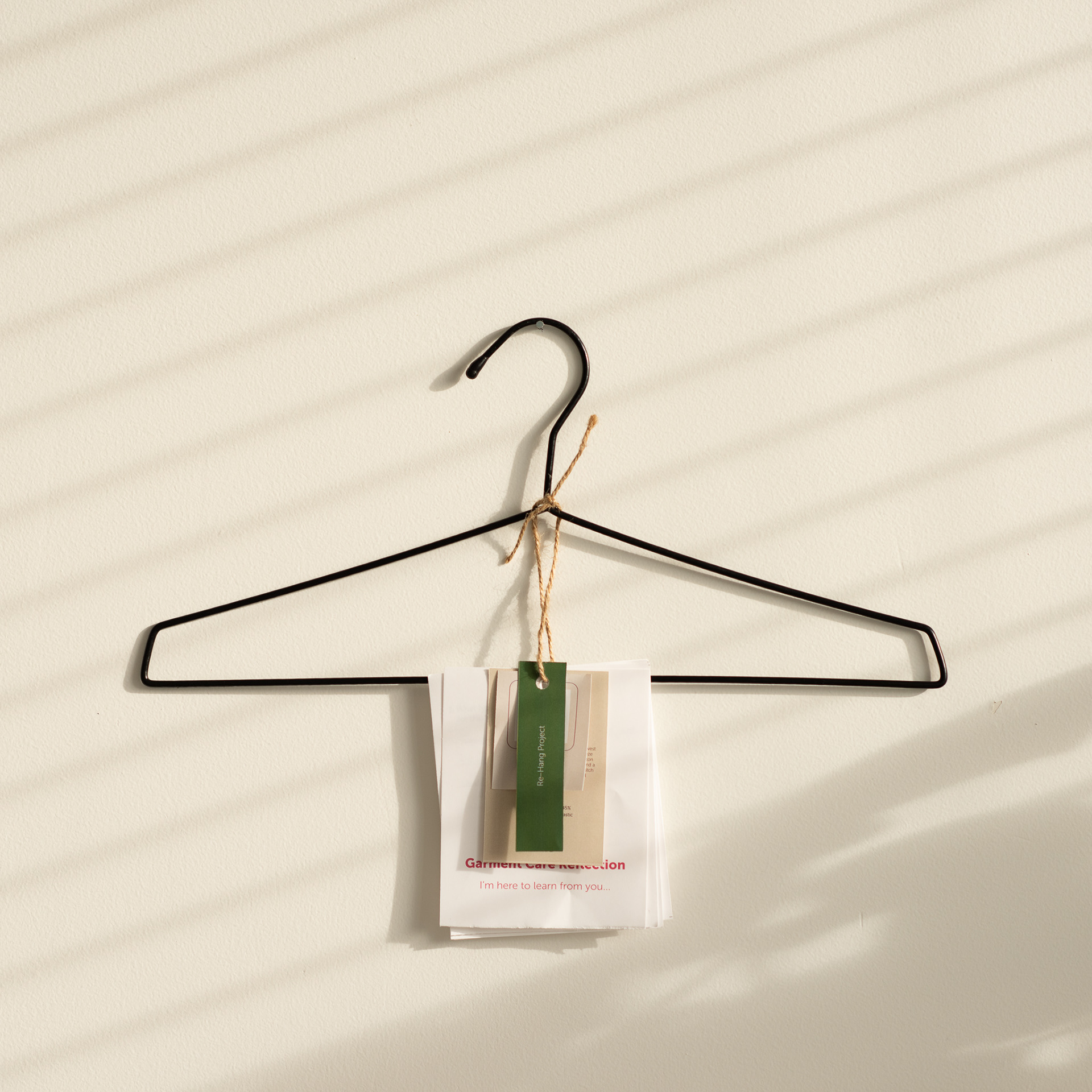


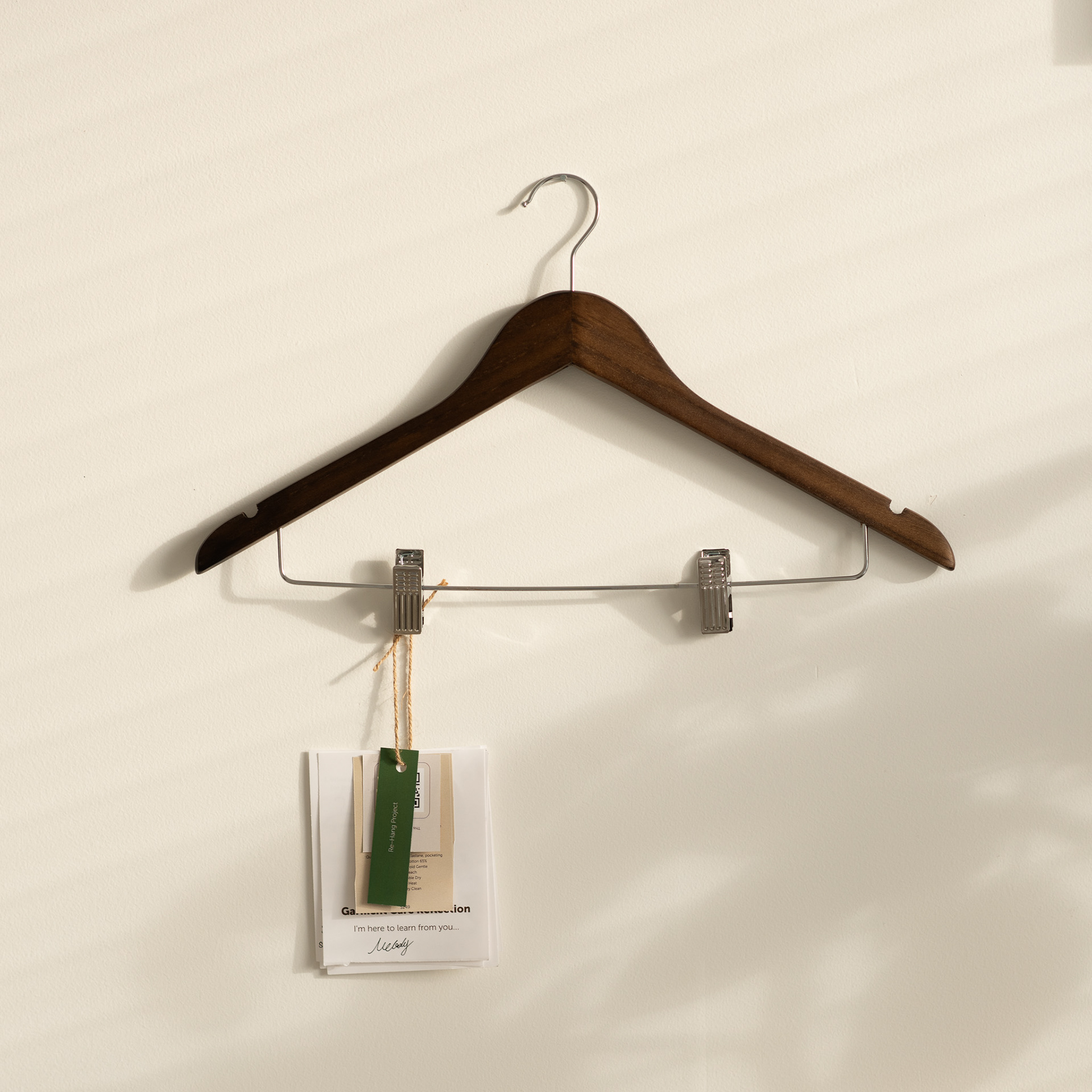

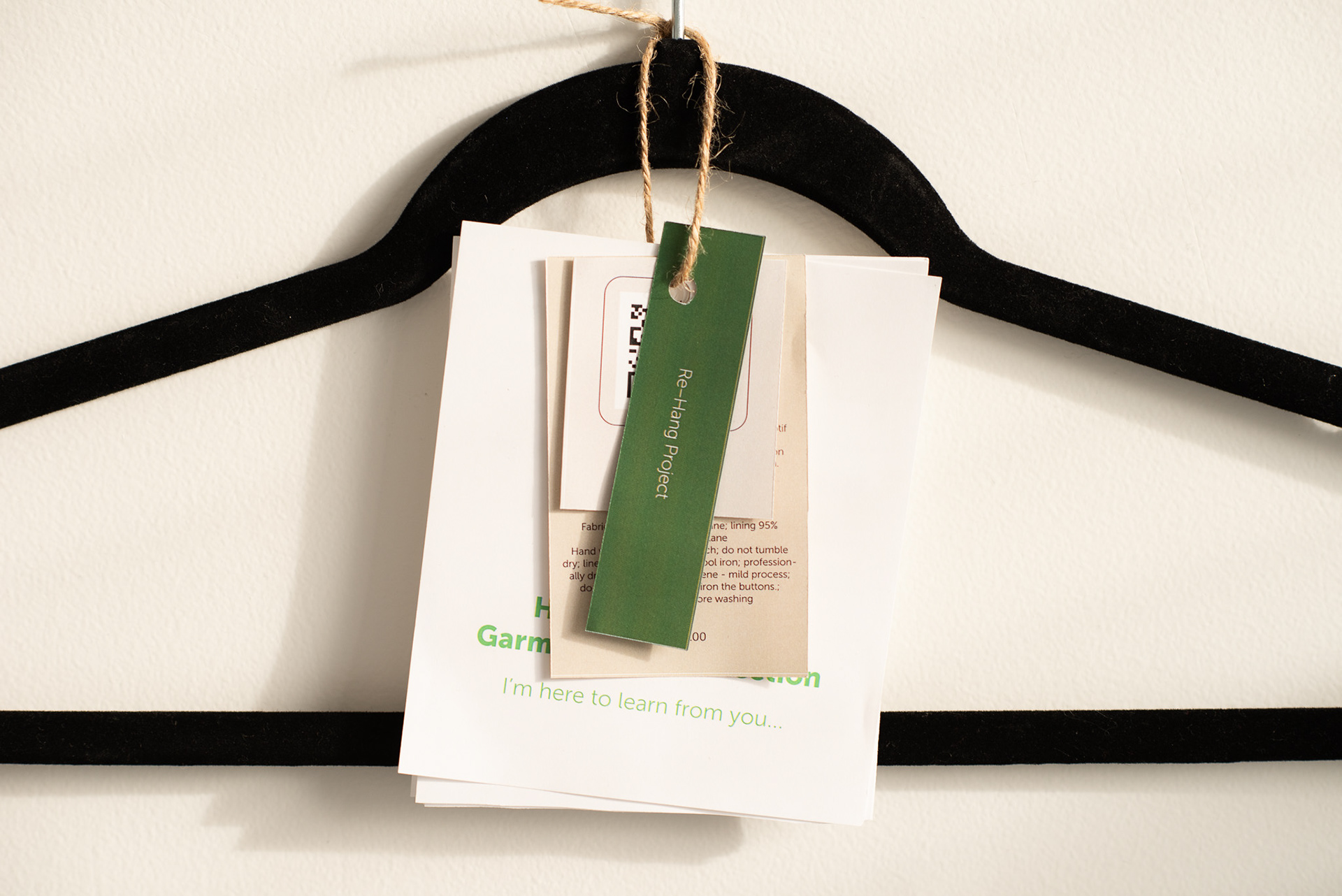
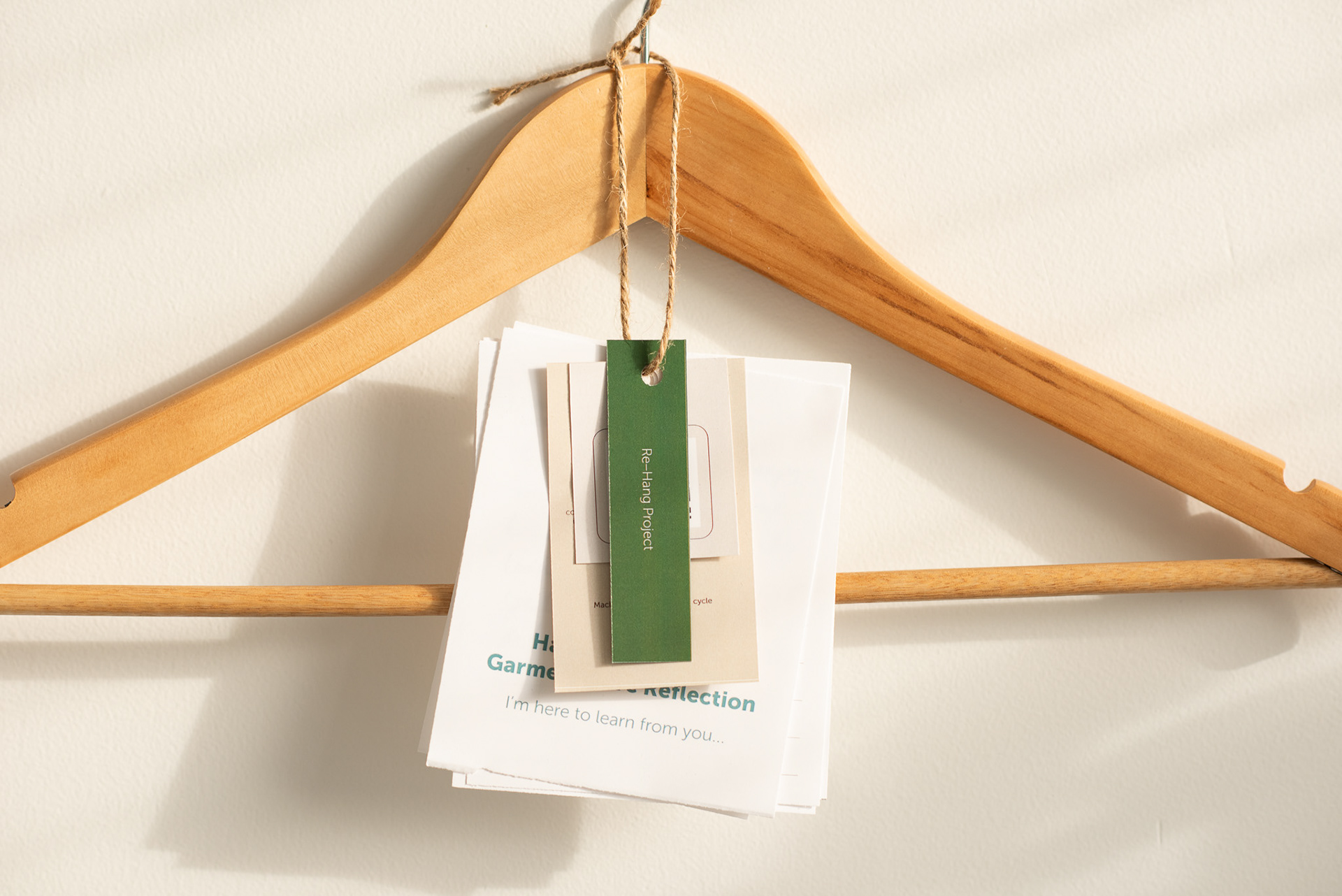
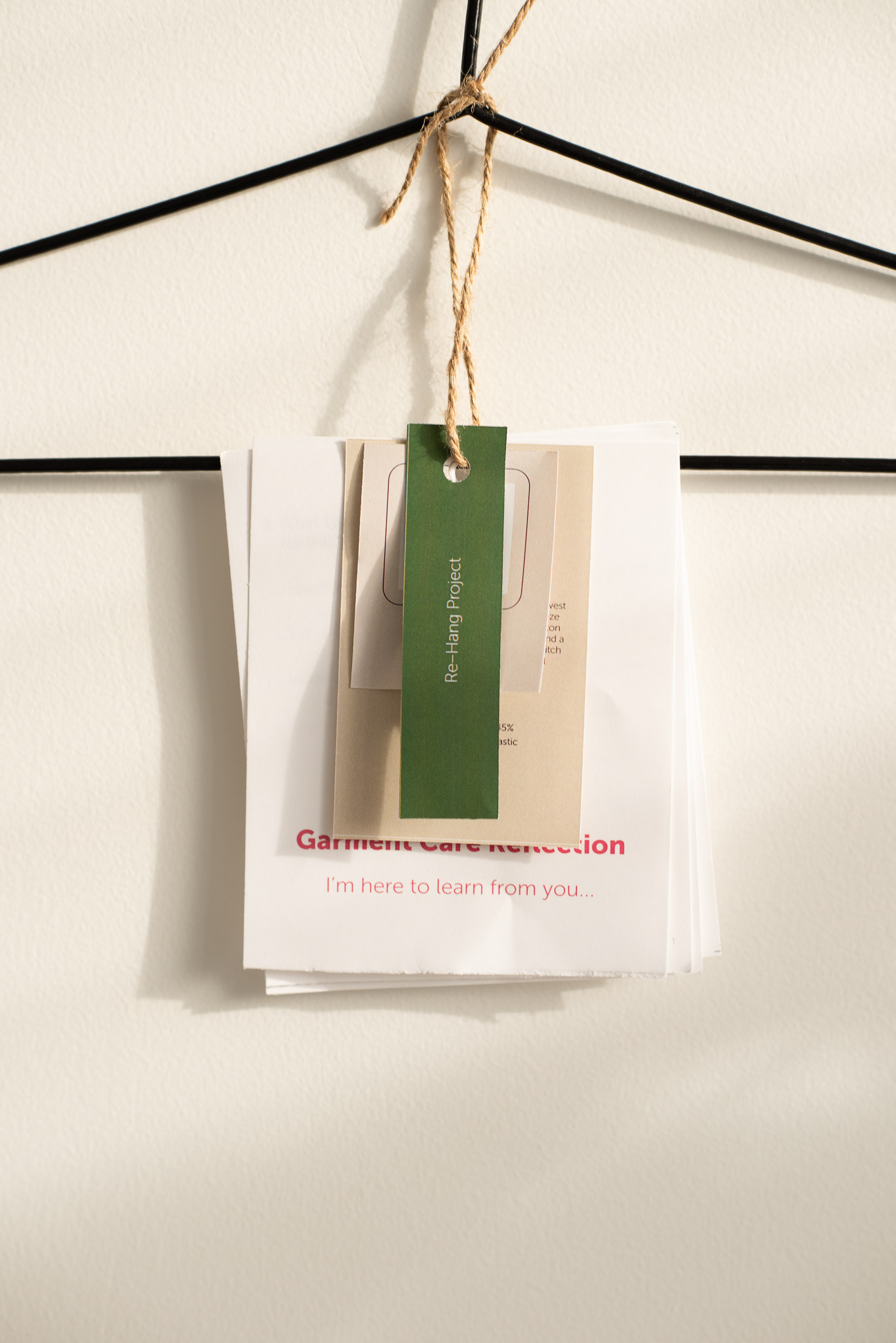
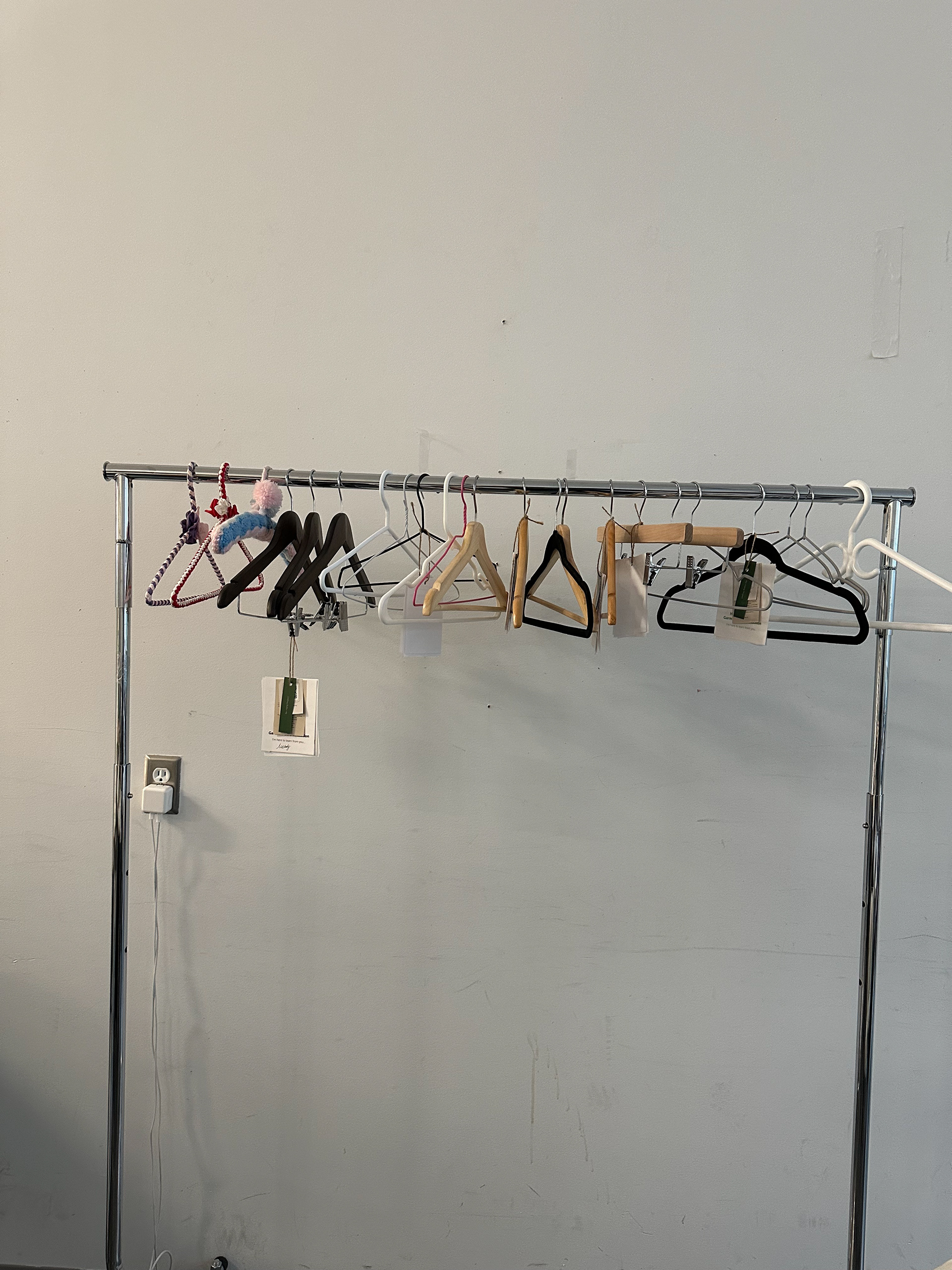
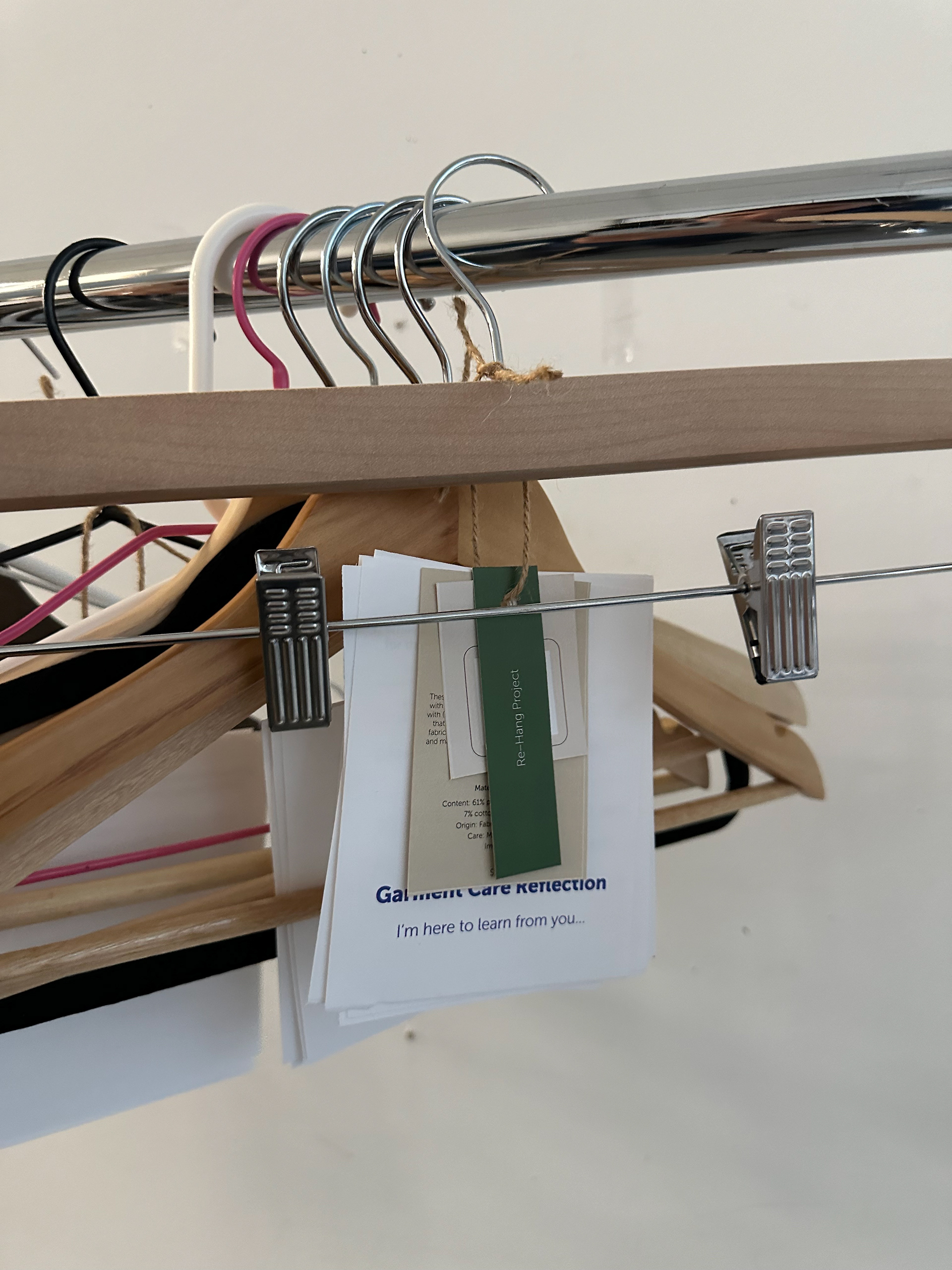

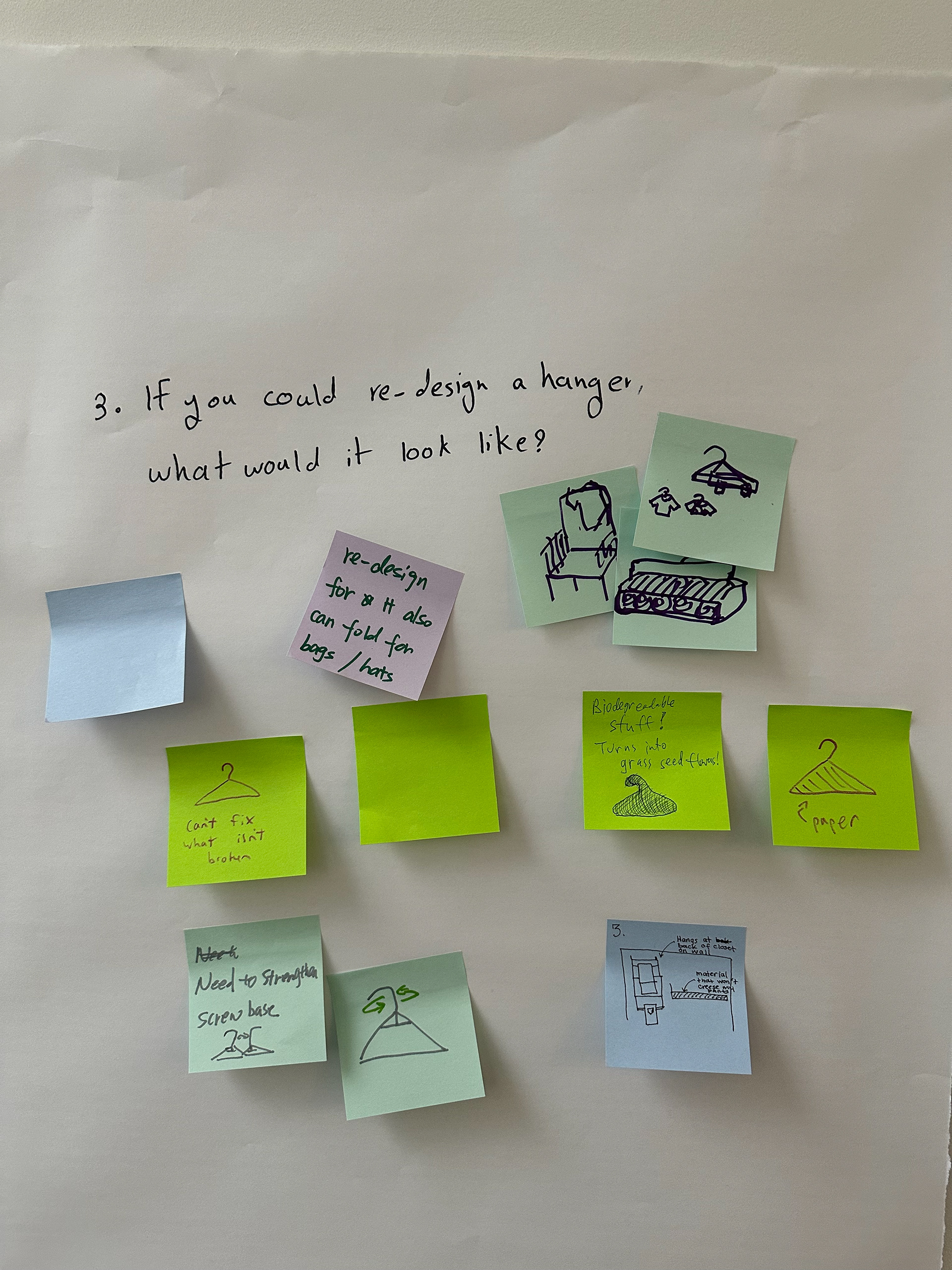
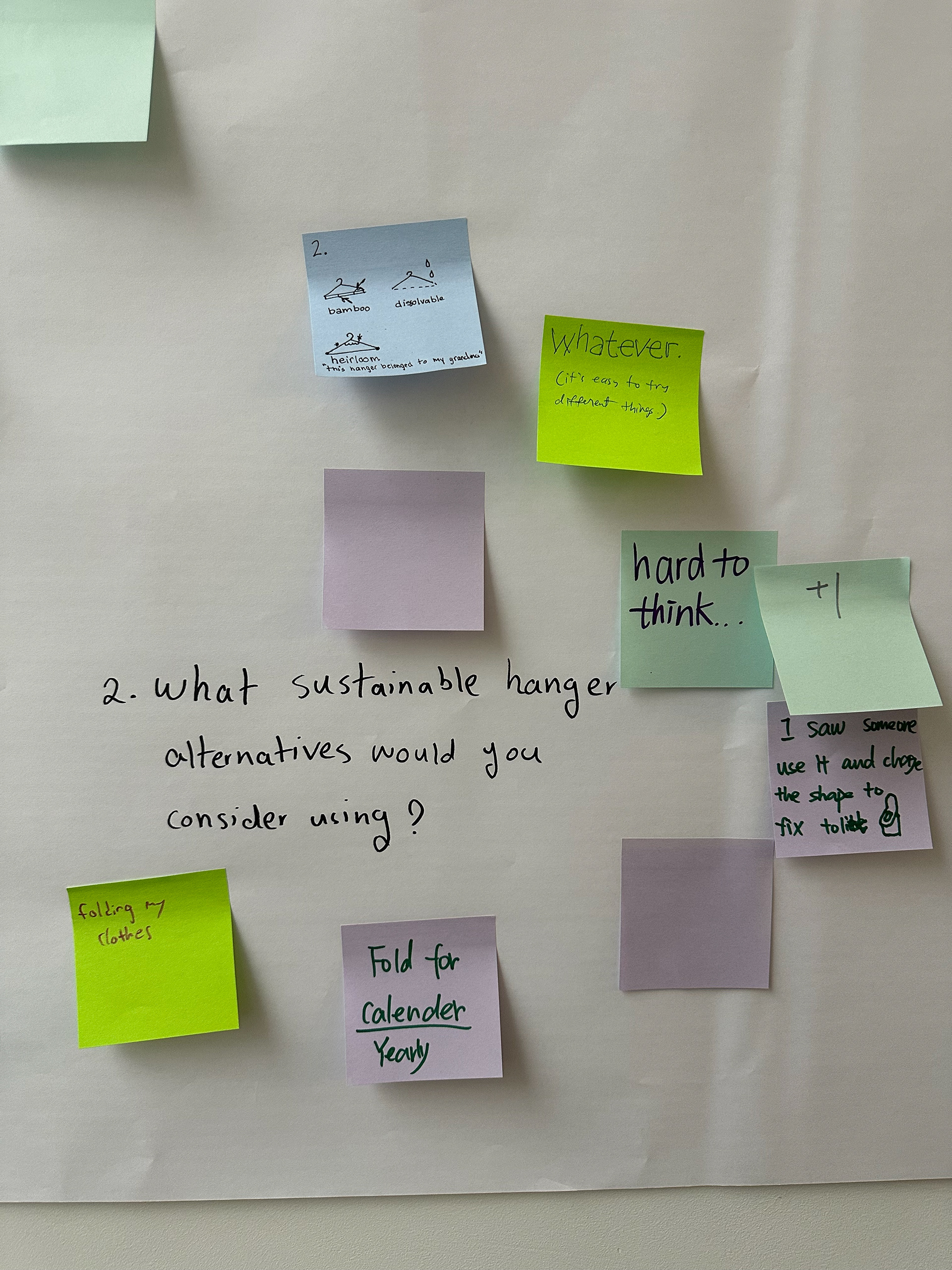




Reflections on Sustainability & Longevity:
Revisiting the Research Question Original Question: How do consumer perceptions and behaviours around hanger materiality in influence garment longevity and sustainability adoption?
New Consideration: Should we even focus on longevity?
1/ Most sustainability models aim for durability, but what if the answer is impermanence?
2/ Instead of designing hangers to last, should we design them to dissolve back into nature?
3/ Future research should ask: Is longevity always the goal, or is harmony with nature a better design principle?
This study made me question whether longevity is always the best sustainability strategy. Maybe we need to design objects that return to nature, rather than last forever. This is where nature-centered design and biomimicry could offer new solutions.
Future Research Suggestions:
1. Closet Documentation – Study how people actually store garments vs. what they claim about sustainability.
2. Material Experimentation – Test biodegradable hangers in real-world conditions.
3. Consumer Education – Develop ways to bridge the gap between sustainability awareness and action
Closing Statement:
This research shows that sustainability is not just about better materials, it’s about understanding behavior, values, and subconscious choices. By questioning the role of longevity, we can rethink *how everyday objects like hangers t into larger ecological systems.
What Worked Well?
Participants were highly engaged, some had never considered the environmental impact of hangers before. Discussions revealed real contradictions, some supported sustainability but still used plastic hangers due to habit. Luxury brand bias, participants paired expensive garments with wooden/velvet hangers, even if unnecessary.
Unexpected Findings:
1/ Behaviour vs. Values Gap – Some participants believe in sustainability but still chose plastic hangers for convenience.
2/ Unawareness of Hanger Waste – Some had never thought about where hangers end up after disposal.
3/ Short-Term Thinking – Decisions were based on immediate garment needs, not long-term environmental impact.
This study revealed that while people acknowledge sustainability, their real-life choices don’t always reflect that awareness. Hanger decisions are often subconscious, linked more to habit and aesthetics than sustainability considerations.




Areas for Improvement & Next Steps:
1. Longer Engagement Period: One-time decision-making captures immediate thoughts, but tracking participant behaviour over time could show if awareness leads to action.
2. Testing with Sustainable Hanger Prototypes: Instead of hypothetical discussions, giving participants physical prototypes of sustainable hangers would generate real usability feedback.
3. Capturing Closet Insights from Diverse Age Groups: Why? People say they support sustainability, but their private closet spaces ma reveal different habits.
How? Future research could photograph real hanger usage in personal closets across different age groups to understand stated vs. actual behaviours.
People often make the ‘right’ choices in structured settings, but what about in their personal lives? By documenting real closets, we could uncover subconscious behaviours around hanger use and sustainability.